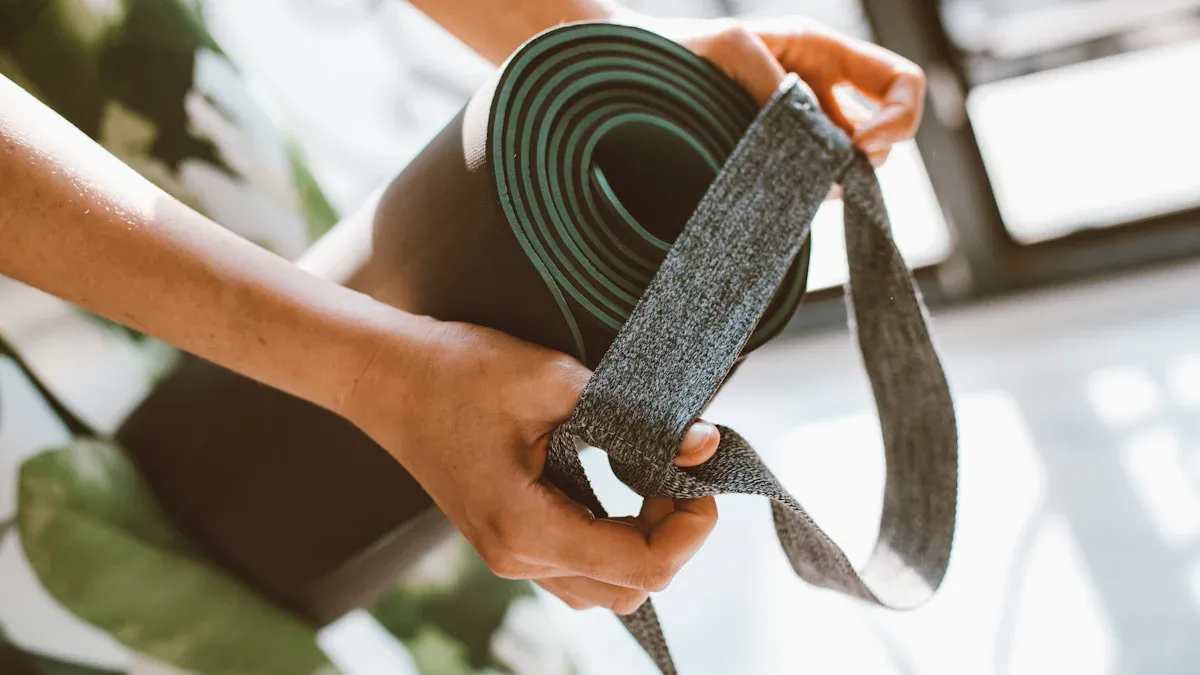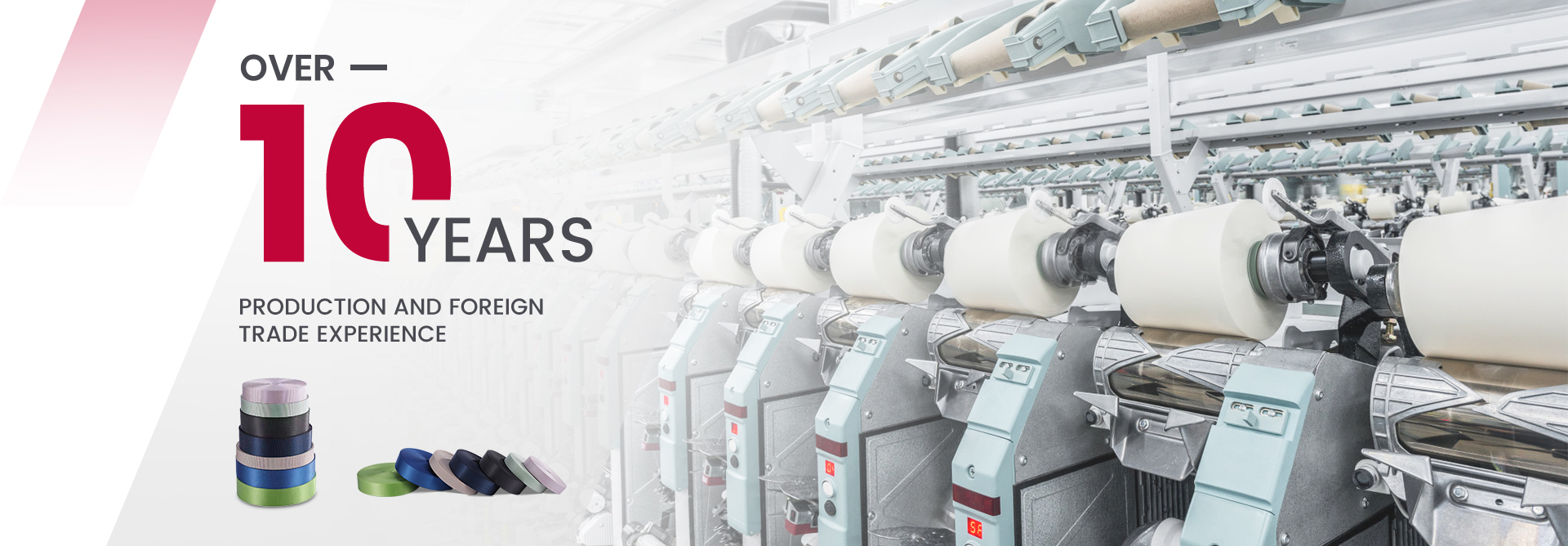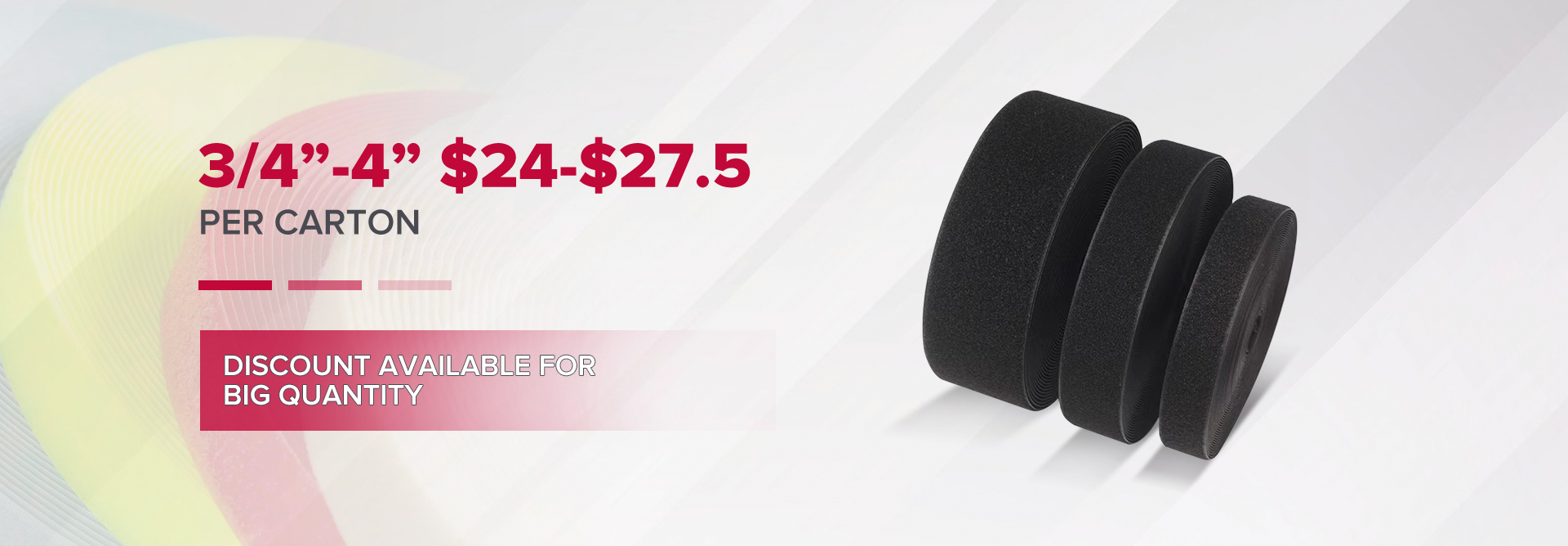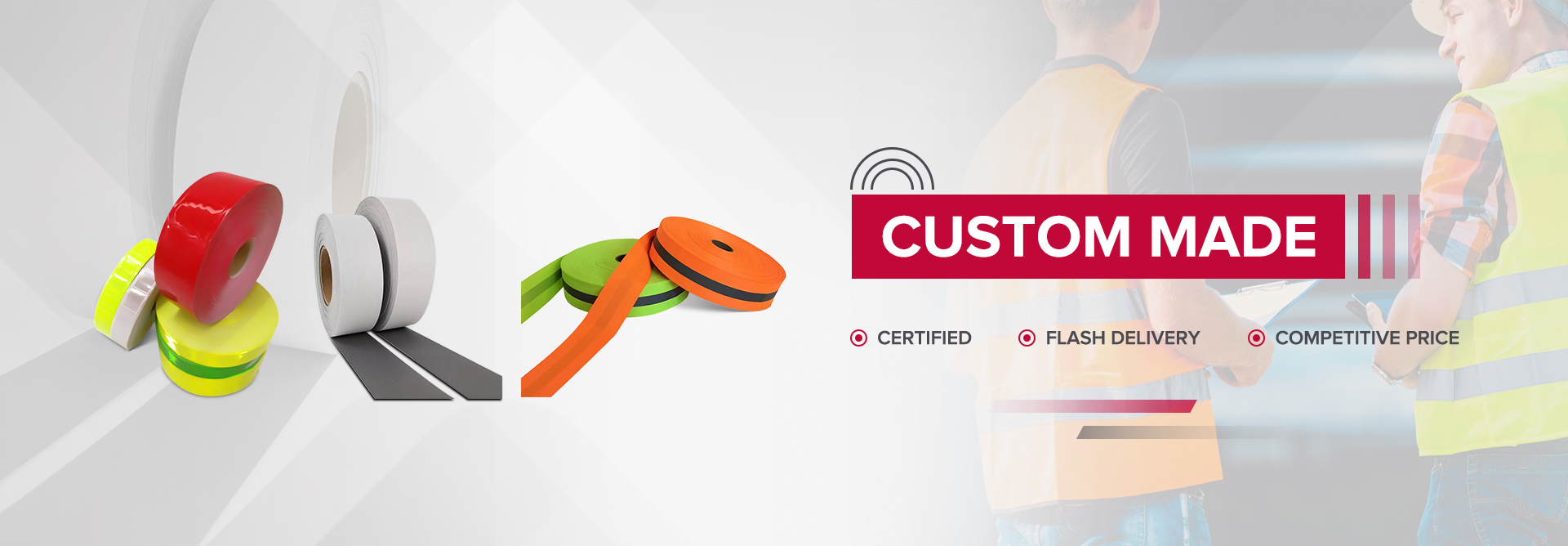ustom jacquard elastic bands combine functionality and style. They provide the perfect balance of stretch and support for waistbands, ensuring durability and comfort. Creating your own design lets you add unique patterns that enhance the product’s appeal. Understanding the process helps you craft an elastic band tailored to your specific needs.
Key Takeaways
- Custom jacquard elastic bands are stylish and useful. They are comfy and supportive, perfect for many uses.
- Picking good materials, like nylon and stretchy threads, is key. Try different mixes to see what works best for you.
- Making special patterns makes your elastic bands look better. Use design tools to see your ideas and make them clear.
Understanding Requirements for Elastic Bands
Purpose and functionality
Elastic bands play a vital role in providing stretch and support for various applications. When designing one, you need to consider its intended purpose. For waistbands, the elastic band must offer flexibility while maintaining a snug fit. It should stretch easily but return to its original shape without losing strength. If you’re creating elastic bands for sportswear, durability and moisture resistance become essential. Think about how the band will interact with the product and the user. This ensures it performs well under different conditions.
Size and elasticity specifications
Choosing the right size and elasticity is crucial for a functional elastic band. Start by measuring the width and length required for your project. Wider bands often provide more support, while narrower ones work better for lightweight applications. Elasticity depends on the type of stretch you need. For example, a waistband should have moderate elasticity to stay secure without feeling too tight. Test different levels of stretch and recovery to find the perfect balance. Always match the specifications to the product’s needs.
Custom design considerations
Custom designs allow you to add personality and branding to your elastic band. You can create unique patterns, logos, or color combinations that stand out. Begin by sketching your ideas or using design software to visualize them. Keep the design simple enough to ensure clarity when woven into the band. Consider how the pattern will look when stretched. A well-thought-out design enhances the aesthetic appeal while maintaining the band’s functionality.
Material Selection for Elastic Bands
Choosing the right materials is essential when designing an elastic band. The materials you select determine the band’s durability, stretch, and overall performance. Let’s explore the key components that make up a high-quality elastic band.
Nylon and its benefits
Nylon is one of the most popular materials for elastic bands, and for good reason. It offers excellent strength and flexibility, making it ideal for products that require long-lasting performance. Nylon resists wear and tear, so your elastic band will maintain its shape even after repeated use. It also dries quickly, which is especially useful for activewear or outdoor gear.
Another advantage of nylon is its smooth texture. This ensures the band feels comfortable against the skin, reducing the risk of irritation. If you want a material that combines durability, comfort, and versatility, nylon is a top choice.
Elastic threads for stretch and recovery
Elastic threads are the backbone of any elastic band. These threads give the band its ability to stretch and return to its original shape. Without them, the band would lose its elasticity over time. You can choose from various types of elastic threads, such as rubber or spandex, depending on your needs.
Rubber threads provide excellent stretch and are cost-effective. However, they may not be as durable as other options. Spandex threads, on the other hand, offer superior stretch and recovery. They are also more resistant to heat and moisture, making them suitable for high-performance applications. By selecting the right elastic threads, you ensure your band delivers consistent performance.
Blending materials for specific needs
Sometimes, a single material isn’t enough to meet all your requirements. Blending materials allows you to create an elastic band that balances multiple properties. For example, combining nylon with spandex can enhance both durability and stretch. This blend works well for waistbands that need to be strong yet flexible.
You can also experiment with other materials like polyester or cotton. Polyester adds resistance to fading and shrinking, while cotton improves softness and breathability. By blending materials, you can customize the band to suit specific applications, whether it’s for sportswear, medical use, or everyday clothing.
Tip: Always test different material combinations to find the perfect balance for your project. This ensures the final product meets your expectations.
Designing Jacquard Patterns

Creating a custom jacquard pattern for your elastic band involves a mix of creativity and technical knowledge. This process allows you to weave intricate designs directly into the fabric, making your product visually appealing and unique. Let’s break down the steps to help you get started.
Basics of jacquard weaving
Jacquard weaving is a technique that uses a specialized loom to create complex patterns. Unlike traditional weaving, where the design is printed or embroidered, jacquard weaving integrates the pattern into the fabric itself. This makes the design more durable and resistant to wear.
To understand the basics, think of the loom as a tool that lifts and lowers individual threads to form a pattern. Each thread corresponds to a specific part of the design. By controlling these threads, you can create intricate shapes, logos, or even text. The key to success lies in planning your design carefully and ensuring it aligns with the loom’s capabilities.
Tip: Start with simple patterns if you’re new to jacquard weaving. This helps you learn the process without feeling overwhelmed.
Using design software for patterns
Design software plays a crucial role in creating jacquard patterns. These tools allow you to visualize your ideas and convert them into a format the loom can understand. Popular software options include Adobe Illustrator, CorelDRAW, and specialized jacquard design programs like NedGraphics or Pointcarre.
When using design software, begin by sketching your pattern. Keep the design clear and avoid overly intricate details, as they may not translate well onto the elastic band. Once your sketch is ready, use the software to assign colors and define the weave structure. Most programs let you preview how the pattern will look when woven, helping you make adjustments before production.
Note: Save your design in a file format compatible with your loom. This ensures a smooth transition from digital design to physical weaving.
Preparing loom instructions
After finalizing your design, the next step is to prepare instructions for the loom. These instructions, often called “cards” or “punch cards,” tell the loom how to lift and lower threads to create the pattern. Modern jacquard looms use digital files instead of physical cards, making the process faster and more precise.
To prepare the instructions, you’ll need to map your design onto the loom’s grid. Each square on the grid represents a thread, and its position determines whether the thread is raised or lowered. Use your design software to generate this grid automatically. Once the grid is ready, upload it to the loom’s control system.
Testing is essential at this stage. Run a small sample to ensure the pattern appears as intended. If you notice any issues, adjust the instructions and test again. This step ensures your final product meets your expectations.
Pro Tip: Keep a record of your loom settings and instructions for future reference. This saves time if you need to reproduce the same pattern later.
Producing and Testing Prototypes
Initial loom setup
Setting up the loom correctly is the first step in producing your prototype. Begin by ensuring the loom is clean and free of debris. This prevents any interference during weaving. Next, load the warp threads according to your design specifications. Each thread must align with the pattern grid you created earlier. Double-check the tension of the threads. Uneven tension can distort the pattern and affect the quality of the elastic band.
Tip: Use a tension gauge to maintain consistent thread tension across the loom. This ensures a smooth weaving process.
Once the loom is ready, run a quick test with a simple weave. This helps you confirm that the machine operates smoothly before starting the actual prototype.
Prototype production and testing
After setting up the loom, begin weaving the prototype. Follow the design instructions carefully to ensure the jacquard pattern appears as intended. Monitor the process closely. Look for any irregularities in the weave or pattern alignment.
Once the prototype is complete, test its functionality. Stretch the band to check its elasticity and recovery. Examine the pattern for clarity and consistency. If the band will be used in clothing, test it for comfort by wearing it under normal conditions.
Feedback and adjustments
Gather feedback from users or team members who test the prototype. Ask them about the band’s comfort, durability, and design. Use their input to identify areas for improvement.
Make adjustments to the loom settings or materials based on the feedback. For example, if the band feels too tight, reduce the thread tension or adjust the elasticity. Test the revised prototype again to ensure it meets your expectations.
Note: Iteration is key. Each round of feedback and adjustment brings you closer to the perfect elastic band.
Ensuring Quality in Final Elastic Bands
Testing for durability and comfort
Testing ensures your elastic band performs well in real-world conditions. Start by evaluating its durability. Stretch the band repeatedly to check if it maintains its elasticity over time. Expose it to different environments, such as heat or moisture, to see how it reacts. These tests help you identify weaknesses in the material or design.
Comfort is equally important. Wear the band for extended periods to assess how it feels against the skin. Look for signs of irritation or discomfort. If the band will be used in clothing, test it with various fabrics to ensure compatibility. A durable and comfortable band enhances user satisfaction and product reliability.
Verifying design accuracy
Your custom jacquard pattern must match the original design. Compare the woven pattern to your digital file. Check for alignment, color accuracy, and clarity. Stretch the band slightly to see how the design looks under tension. This step ensures the pattern remains visually appealing when the band is in use.
If you notice any discrepancies, adjust the loom settings or design file. Accurate patterns not only improve aesthetics but also reflect the quality of your product.
Final inspections and approval
Before production, conduct a thorough inspection of the elastic band. Examine the weave for consistency and ensure there are no loose threads or defects. Test the band’s elasticity one last time to confirm it meets your specifications.
Once you’re satisfied, approve the final product for mass production. Keeping detailed records of your process helps maintain quality in future projects.
Creating custom jacquard elastic waistbands involves understanding requirements, selecting materials, designing patterns, and ensuring quality. Customization lets you add unique designs that elevate your product. Material choice impacts durability and comfort. Testing guarantees reliability. Explore new ideas and focus on functionality to craft elastic bands that meet your needs and stand out in the market.
FAQ
How do I choose the right elasticity for my waistband?
Test different stretch levels. Select one that balances comfort and support. Ensure it recovers its shape after stretching. This prevents sagging and ensures durability.
Can I use other materials besides nylon for elastic bands?
Yes! Polyester adds fade resistance. Cotton improves softness. Blend materials to meet specific needs. Experiment to find the best combination for your project.
What software works best for designing jacquard patterns?
Adobe Illustrator and CorelDRAW are great options. Specialized tools like NedGraphics simplify weaving designs. Choose software that matches your skill level and loom compatibility.
Tip: Start with simple designs to learn the software faster.
Post time: May-21-2025



